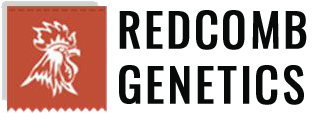Sterling Poultry Products was one of five (Sterling, Chunky Chicks (Nichols), Spinks, Sykes and Fairbairn) breeding organisations that eventually contributed to the group that comprised Ross Poultry Ltd and later Ross Breeders. The company was founded by Mr G.G. Belfield in 1929 with the objective to produce high quality day-old chicks. The aim of the company was to produce “Britain’s Best Birds”. It was situated at Absol Park, Felsted, Essex on a 300 acre farm. His organisation produced pure bred and cross bred laying stock and pure bred and cross-breed for table production. The table breeds and crosses in 1937-38 were Table Sussex, Game Sussex Cross, Sussex-RIR cross and RIR x Light Sussex. The laying breeds and crosses in 1954 were Light Sussex, RIR, RIR x Light Sussex, Black, White and Brown Leghorns and crosses of the Black, Brown and White Leghorn with RIR hens. Mr Belfield began an inbreeding program in 1944 following the lead of the hybrid corn breeding in the USA. After four years of brother-sister mating, the best progeny were used to create inbred lines. Compared to the level of wastage in the HyLine inbreeding program the wastage in the Sterling breeding was relatively small. The inbred lines were then crossed to establish the best combinations and in 1951 the first Hybred Gold Links were marketed. The pullets were brown feathered, vaguely resembling a RIR, and typically produced 200 brown eggs; the cockerels were white feathered (silvers), vaguely resembling a Light Sussex. The performance was 5-10% better than the pure breeds of that time. The pullet had a mature weight of about 3.0kg and was regarded as a dual purpose bird. The Hybred Silver Link was introduced two years later, a smaller hen with a mature weight of 2kg, typically producing 210 tinted eggs. Then Belfield and his team produced the Red-Link in 1954 soon after, a hen similar in size and performance to the Gold Link but produced tinted eggs. The Gold and Silver Link pullets in the 1953-54 catalogue were priced at £18-22 per 100 at day-old, a premium of £5 over the pre breeds and crosses. Then the breeding team undertook improve the Silver Link. After completing more test crosses the grandparent lines were replaced and in 1960 produced a new Silver Link that was slightly smaller and predominantly white feathered producing a tinted shell. It completely replaced the brown Silver Link. The testing program continued and expanded with the introduction of a 10×10 diallel crossing program with the aim of producing a brown egg White Link.

The breeding team then concentrated on breeding a better broiler than was available in Britain and in 1959, after five years of breeding research and testing, launched a dominant white-feathered, white fleshed broiler the Sterling Supreme.
Sterling Poultry Products had a national spread of farms and hatcheries which in 1959 numbered 17 from Maud in Aberdeenshire to Truro in Cornwall. The hatcheries and production farms were manned by experienced poultrymen who were to be part of the Sterling Advisory Service.
Sterling also manufactured a range of poultry houses and equipment for egg and broiler production . The trading name Sterling disappeared from the UK poultry production in 1977 when the then owner Imperial Foods Ltd reorganised the business under a holding company Ross Buxted Nitrovit Ltd to launch five autonomous trading companies: Buxted Poultry Ltd, Nitrovit Ltd, Ross Poultry Great Britain Ltd, Ross Poultry Ireland Ltd and Ross Breeders Ltd.


